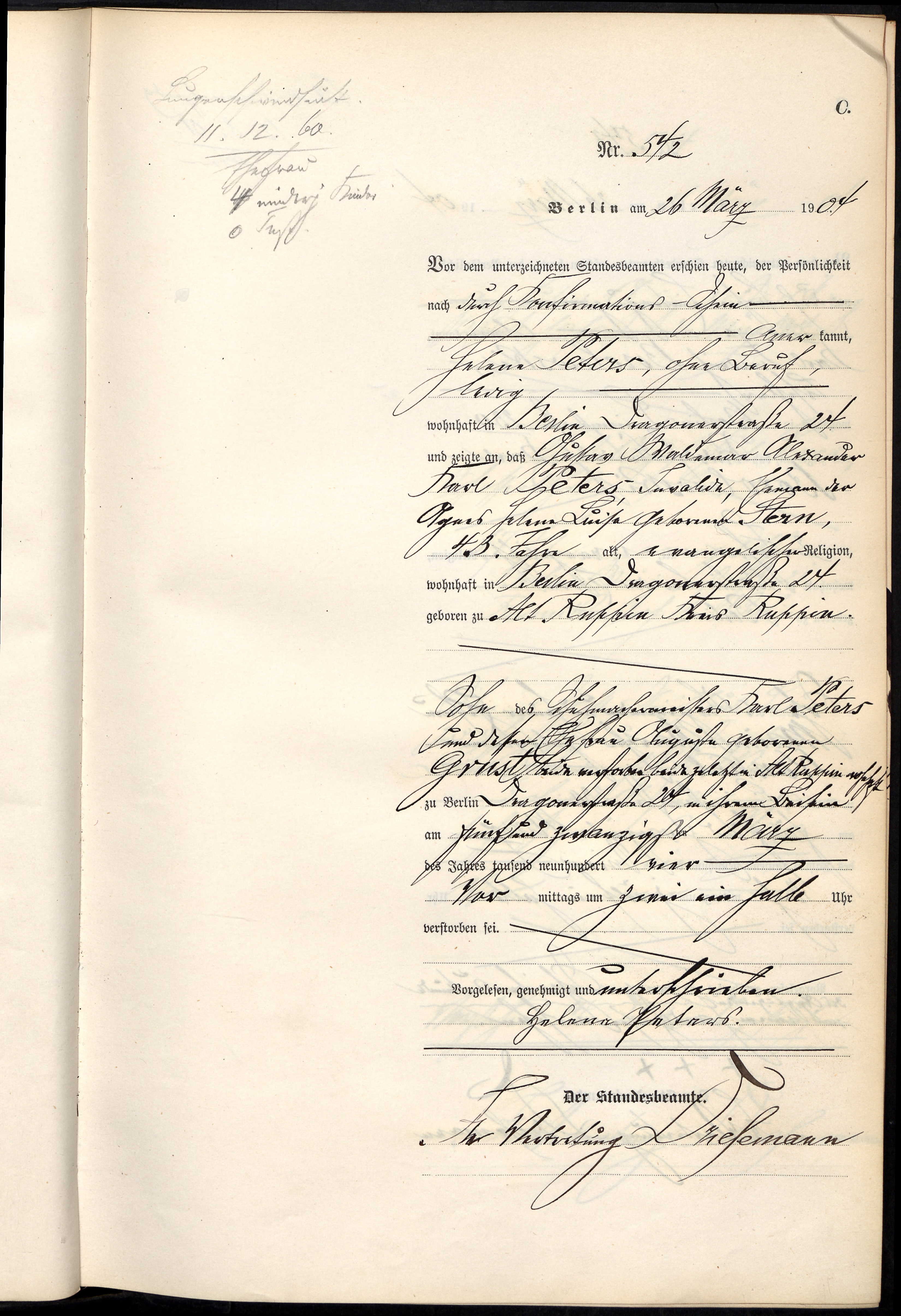A hundred and fifty years ago tomorrow, on 22 November 1872, my fourth great grandfather Karl Gustav Grust (1802–1872) died at the age of seventy at Neuruppin, a small Brandenburg town about 80 km northwest of Berlin.
He was a Tuchmacher (cloth maker); a skilled worker in the textile industry.
The collection of the museum at Neuruppin includes a Stammbuch der Tuchmacher-Meister zu Neu-Ruppin, Neuruppin, 1584-1887, a Register of master cloth makers in Neu-Ruppin, Neuruppin, with entries from 1584 to 1887.
The importance of the guilds declined when freedom of trade was introduced in Prussia in 1810, and there was a diminishing number of master cloth makers in the register from 1887. I have emailed the museum to ask if the register lists my fourth great grandfather Karl Grust.
Karl Gustav Grust married Charlotte Wilhelmine Berg in about 1829. They had at least four children during their marriage.
- Auguste Charlotte Wilhelmine Grust 1830–
- Emilie Louise Albertine Grust 1832–1832
- Auguste Henriette Amalie Grust 1835–1893 (my 3rd great grandmother)
- Karl Gustav Grust 1839–1901
His daughter Auguste Henriette Amalie Grust was born on 28 June 1835 in Neuruppin, Brandenburg, Germany. She married Karl Detlof Albert Peters on 10 March 1859.
Gustav Grust’s grandson, Gustav Waldemar Alexander Karl (Alfons) Peters was born on 11 December 1860 in Alt Ruppin, Brandenburg, 8 kilometers from Neuruppin. Gustav junior, known as Alfons, was the father of my great grandmother, Helene Auguste Minna (Peters) Manock (1889 – 1944).




1. Holy Trinity Church. Retrieved from Wikimedia Commons. Photograph by user A.Savin, WikiCommons
2. Old Gymnasium. Retrieved from Wikimedia Commons. Photograph by user T.marcusson, CC 3.0
3. Virchowstraße. Retrieved from Wikimedia Commons. Photograph by user Radler59, CC BY-SA 4.0
4. View over the Ruppiner See to the Holy Trinity monastery church on Niemöllerplatz. Retrieved from Wikimedia Commons. Photograph by user Radler59, CC BY-SA 4.0
Neuruppin was a planned town first mentioned in 1238 and founded by the Counts of Lindow-Ruppin. It was fortified from the 13th century. In the Middle Ages Neuruppin was one of the larger north-east German towns. In 1688 Neuruppin became one of the first garrison towns in Brandenburg. (It remained a garrison town until the late 20th century; Soviet troops were stationed there until 1993.)
On the afternoon of Sunday, August 26, 1787, a fire broke out in a barn filled with grain and spread quickly. Only two narrow areas on the east and west edges of the city survived. 401 houses, 159 outbuildings, 228 stables and 38 barns, the parish church of St. Mary, the town hall, the Reformed Church and the Princely Palace were destroyed. Neuruppin was rebuilt between 1788 to 1803, following a new design with long wide streets and many squares.
Frederick the Great (1712–1786), lived in Neuruppin in his years as crown prince of Prussia.
In Gutav Grust’s lifetime Neuruppin is associated with a number of notable people including the architect Karl Friedrich Schinkel (1781–1841), the novelist and poet Theodor Fontane (1819–1898), and the pharmacist and founder of Beiersdorf AG Paul Carl Beiersdorf (1836–1896).
In 1875 the population of Neuruppin was 20,000.
Related post:
- G is for Gustav (concerning the grandson of Karl Gustav Grust)
Wikitree:







